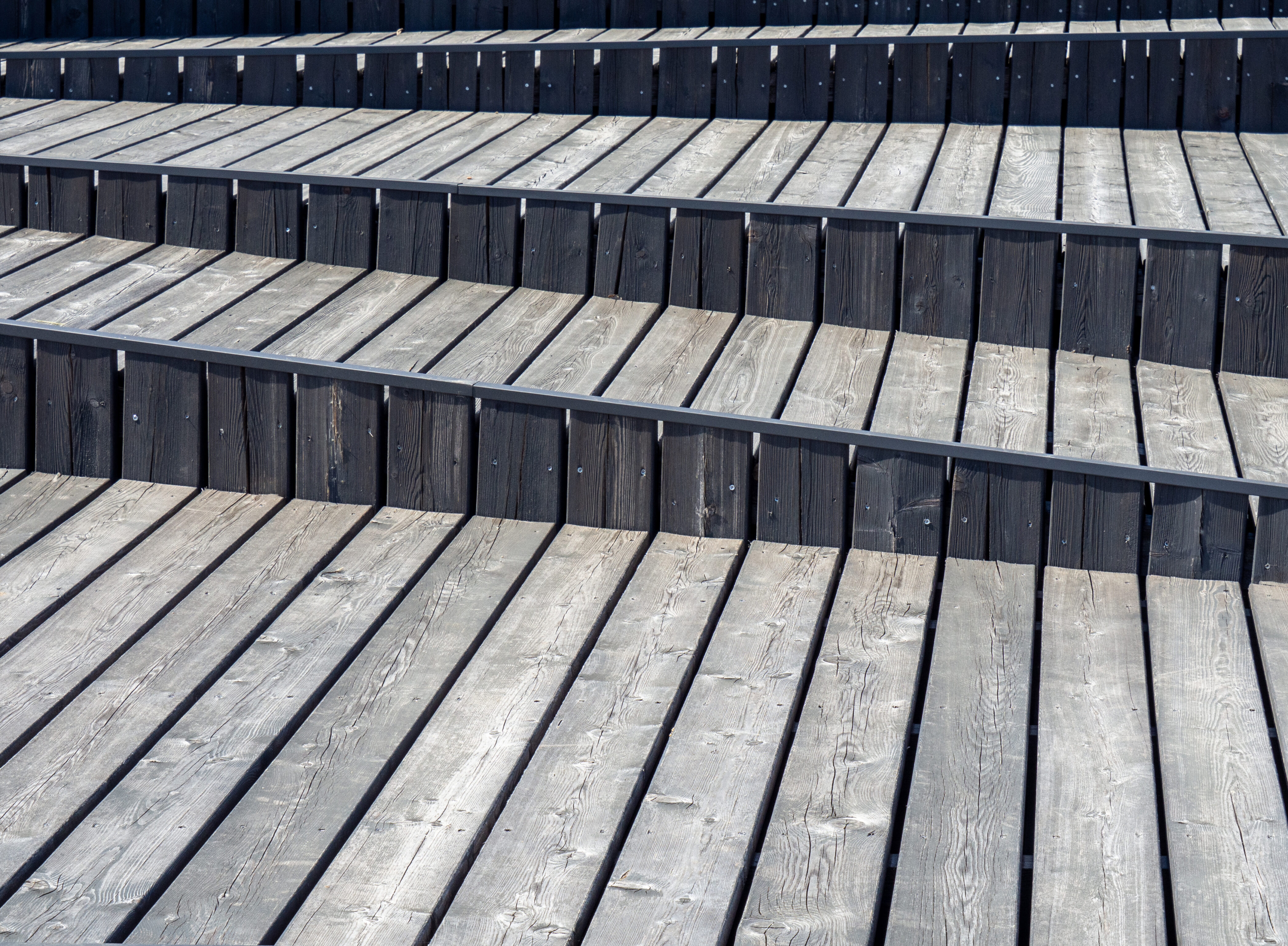
Why Is My Deck Turning Gray?
Causes and Solutions For Graying Wood
If you’re wondering why your once-vibrant wood deck is turning gray, you’re not alone. A gray deck can sneak up on you. One season it’s warm and rich in color, and the next it looks weathered, dull, and tired.
The graying of wood is a common issue faced by deck owners, especially across coastal regions or humid climates, leaving wood exposed and vulnerable.. The good news is that with the right wood treatment and protection, you can restore color, shield your deck from the elements, and extend its life for years to come.
What Causes Wood to Turn Gray?
Is Graying Harmful or Just Cosmetic?
Graying is mostly cosmetic—at first. It doesn’t mean your deck is rotting or failing. But over time, as the wood surface breaks down and loses its protective layer, it becomes more vulnerable to moisture, mildew, and decay. Ignoring graying can lead to structural issues down the line.
Sunlight and UV Exposure
The #1 culprit of graying wood is UV radiation from the sun. Ultraviolet rays break down lignin, the natural substance that binds wood fibers together. As the lignin deteriorates, the wood’s surface loses color and becomes more prone to absorbing moisture, which accelerates the aging process.
Moisture and Rain
Water is another major factor. Rain, humidity, and dew penetrate the wood surface, leading to swelling, shrinking, and ultimately cracking. When wood undergoes this moisture cycle repeatedly, it weakens the cellular structure, encourages mold and mildew, and promotes that gray patina.
Oxidation and Air Exposure
Oxygen exposure causes a chemical reaction that affects the pigments in wood. This oxidation process is slow but steady, creating a uniform color fade across your deck.
Environmental Factors
Dirt, pollen, salt, wind, and furniture can all contribute to wear. Combined with sun and moisture, these elements cause accelerated graying and weathered wood, especially in waterfront or high-exposure environments.
Wood Species Matters
Different wood species gray at different rates. Cedar and redwood develop a silver patina that some people love. Pine and pressure-treated lumber may turn patchy or unevenly gray. Hardwoods like Brazilian ipe resist graying longer, but aren’t immune to wear and tear.
How to Prevent Your Deck From Turning Gray
If you want to protect your deck from weathering, you’ll need to be proactive with your deck or dock maintenance. Here’s how:
1. Seal and Stain Regularly
Applying a quality, oil-based stain with UV-blocking pigments creates a protective layer on the wood surface. It helps repel water and reduce sun damage. Use a foam brush or sprayer for smooth, even application, and wipe off any excess.
- Transparent stains show more grain but offer less protection.
- Semi-transparent stains balance color and protection.
- Solid stains hide grain but provide the strongest UV barrier.
2. Clean and Maintain
Sweep regularly. Clean spills promptly. Use a deck cleaner annually to remove dirt, mildew, and tannins. Brighteners can help restore color and prepare the surface for a new coat of stain.
3. Choose the Right Materials
If you’re building new or replacing boards, consider low-maintenance composite decking, PVC decking, or pressure-treated wood. Composite materials resist fading, staining, and graying better than wood, especially in high-moisture or high-sun environments. Pressure-treated lumber is designed for longevity as well and can make a big difference in how your wood ages.
4. Limit Furniture and Rug Wear
Outdoor furniture and rugs can trap moisture and cause uneven fading. Use breathable mats and move furniture occasionally to avoid discoloration.
When to Embrace the Gray and When to Fight It
Grayed wood can have a natural, rustic charm. In fact, some homeowners choose to age wood intentionally to achieve that silvery patina. If your deck is structurally sound and the weathered look matches your aesthetic, a simple, clear sealant can maintain the color while protecting the surface.
If your deck looks patchy, dirty, or worn down after a few years, however, it’s time to refinish. Cosmetic graying is one thing. Deep damage, splinters, or soft spots are signs your deck needs attention beyond aesthetics.
Restoration Options: What Can You Do About Reversing Graying Wood?
If your deck is already turning gray, not to worry; there are still options to bring it back to life!
Sanding
Using sandpaper or a power sander can remove the gray layer and reveal fresh wood beneath. Always sand in the direction of the wood grain for a smooth finish.
Brightening
Wood brighteners help neutralize tannins and enhance wood tone. After cleaning, apply the brightener and let it work before rinsing thoroughly. It revives the appearance and preps the wood for sealing.
Staining or Re-Coating
Once the surface is clean and dry, apply a fresh coat of stain. This adds color, restores uniformity, and protects the wood moving forward.
How Costly is Restoration vs. Prevention?
In general, preventive maintenance is far cheaper than a full restoration. Protecting your deck from the start saves money, time, and effort down the line.
An annual stain and seal, with a little deck cleaner and brightener thrown in, will probably take you about half a day to a day every year. This should only cost you a few hundred dollars.
Restoration, on the other hand, can involve sanding equipment rental if you’re a DIY-er, plus materials, which can easily double that amount and take a lot more time. If you’re looking to contract it out to someone else who has more time and expertise, it’s best to budget three times that amount for a professional refinishing (although you’ll get that time investment back).
Build a Long-Lasting Deck That’s Both Durable and Beautiful
Shop Premium Decking Brands From Decks & Docks
Graying wood is a natural process, but it doesn’t have to ruin your deck. Whether you want to preserve your deck’s rich color or embrace a weathered look, the key is regular maintenance and the right materials.
At Decks & Docks, we supply composite decking, PVC, and pressure-treated wood brands from the best names in the business, along with premium stains, sealers, and expert advice to help you protect wood from the elements. We know what works because we’ve helped thousands of coastal homeowners maintain their decks for the long haul.
Your deck deserves to look its best. Keep it protected, beautiful, and built to last with help from Decks & Docks. We’re here to help, so let us know what we can do for you! Reach out or visit one of our nationwide locations.
FAQs
Does pressure-treated wood turn gray?
Yes. Pressure-treated pine is especially prone to graying if not sealed. Regular maintenance slows the process.
Can I stop cedar from turning gray?
You can slow it down with a UV-blocking stain, but cedar naturally wants to develop a silvery patina over time.
How often should I stain my deck?
Every 1–2 years, depending on exposure and wear. High-sun or high-moisture areas may need more frequent care. Composite decking doesn’t need to be stained!
Can I use steel wool to remove gray from wood?
This is not recommended for large surfaces like decks. It can leave residue or cause uneven texture. Sandpaper is better for smoothing and refinishing.
What’s the best stain for preventing gray?
Oil-based, semi-transparent stains with UV inhibitors offer the best balance of protection and appearance. Decks & Docks carries recommended brands—just ask!
- About the Author
- Latest Posts
Dan has worked for Decks and Docks for over twenty-five years. He managed the original Decks and Docks store in St. Pete, which is our largest store. Dan is simply the best all around. He knows more about this company and our products than probably anyone else. Dan currently works in Sales at our corporate office.
